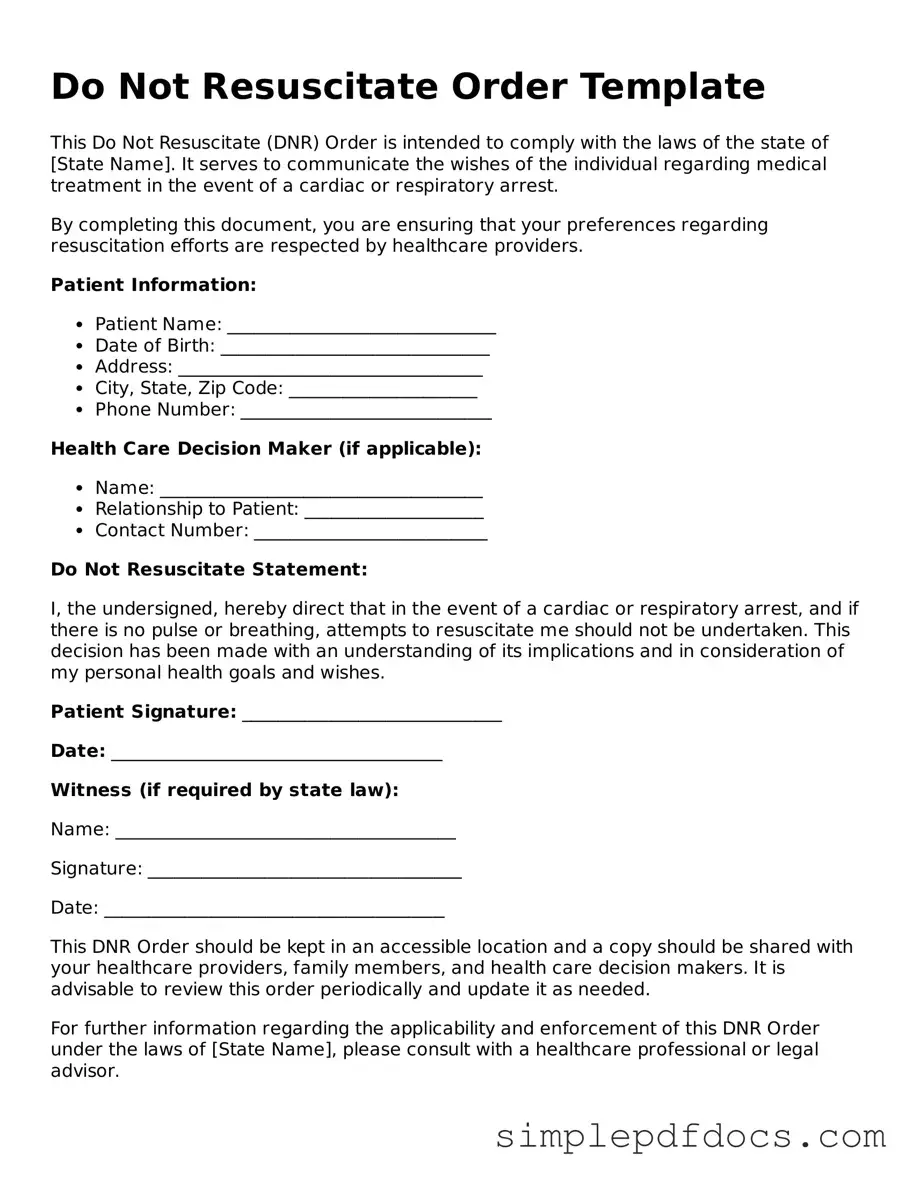The Do Not Resuscitate (DNR) Order form is a crucial document that allows individuals to express their wishes regarding medical treatment in the event of a life-threatening situation. This form typically includes essential information such as the patient's name, date of birth, and medical history. It serves as a clear directive to healthcare providers, indicating that the patient does not wish to receive cardiopulmonary resuscitation (CPR) or other life-sustaining measures if their heart stops beating or if they stop breathing. In addition to outlining the patient's preferences, the DNR Order often requires signatures from both the patient and a physician, ensuring that the decision is made thoughtfully and in consultation with a medical professional. Understanding the implications of a DNR Order is vital for patients and their families, as it can significantly impact end-of-life care and the quality of life during critical moments. By facilitating open discussions about personal values and medical wishes, this form empowers individuals to take control of their healthcare decisions, providing peace of mind for both patients and their loved ones.
